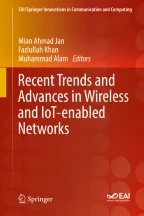Abstract
Image mining has a very emerging sub-domain, namely, web image mining, and researchers are warmly excited towards it. This study presents a deep detail of former studies and ideas that we come up with, i.e. what is Image Mining and what are Web Image Mining techniques. In the domain of web image mining, this study also proposes an idea to recognize and cope with the deceptive images found on the web. It further helps in banning the fraudulent and annoying web users along with solutions in enhancing the users’ behavior in social networking websites like Facebook, Twitter, Tumbler, etc., in blogs, and in e-shopping websites like eBay, Amazon, Daraz.pk, Kaymu.pk, etc. Apart from this, the study also mentions nearly of the conceivable future directions for the researchers in aforementioned domain.
Access this chapter
Tax calculation will be finalised at checkout
Purchases are for personal use only
Similar content being viewed by others
References
Sudhir, R. (2011). A survey on image mining techniques: Theory and application. Computer Engineering and Intelligent Systems, 2(6), 44–52.
Ginsca, A. L., Popescu, A., Borgne, H. L, et al. (2015). Large-scale image mining with flicker groups. In Multimedia modeling conference.
Deshmukh, J., & Bhosle, U. (2016). Image mining using association rule for medical image dataset. Procedia Computer Science, 85, 117–124.
Jayalatchumy, D., & Thambidurai, P. (2013). Web mining research issues and future directions – A survey. Journal of Computer Engineering (IOSR-JCE), 14(3), 20–27.
Wang, D., Hoi, S. C. H., & He, Y. (2011). Ming weakly labeled web facial images for search based face annotation. In ACM SIGIR (pp. 535–544).
Panda, M., Hassanien, A. E., & Abaraham, A. (2016). Hybrid data mining approach for image segmentation based classification. Hershey: IGI Global.
Yanai, K. (2015). A review of web image mining. ITE Transactions on Media Technology and Applications, 3(3), 156–169.
Ni, B., Song, Z., & Yan S. (2009). Web image mining towards universal age estimator. In Proceedings of the 17th ACM international conference on multimedia.
Zhang, X., Zhang, L., Wang, X. J., et al. (2012). Finding celebrities in billions of web images. IEEE Transactions on Multimedia, 14(4), 995–1007.
Azab, A. E., Mahmood, A., & El-Aziz, A. (2017). Effectiveness of web usage mining techniques in business application. Hershey: IGI Global. https://doi.org/10.4018/978-1-5225-0613-3.ch013.
Xia, Y., Cao, X., Wen, F., & Sun J. (2014). Well begun is half done: Generating high-quality seeds for automatic image dataset construction from web. In Proceedings of European conference on computer vision.
Simmons, J. P., Nelson, L. D., & Simonsohn, U. (2011). False positive psychology: Undisclosed flexibility in data collection and analysis allows presenting anything as significant. Psychological Science, 22(11), 1359–1366.
Leys, C., Klein, O., Bernard, P., et al. (2013). Detecting outliers: Do not use standard deviation around the mean, use absolute deviation around the median. Journal of Experimental Social Psychology, 49, 764e6.4.
Foschi, P. G., Kolippakkam, D., Liu, H., & Mandvikar, A. (2002). Feature extraction for image mining. In Proceeding of the multimedia information systems conference (pp. 103–109).
Bhateja, P., Sehrawat, P., & Bhardawaj, A. (2013). An analysis of data mining, web image mining, and their applications. International Journal of Information and Computation Technology, 3(6), 603–608.
Mishra, N., & Silakari, S. (2012). Image mining in context of content based image retrieval: A perspective. International Journal of Computer Science Issues, 9(4), 69–79.
Zahradnikova, B., Duchovicova, S., & Schreiber, P. (2015). Image mining: Review and new challenges. International Journal of Advanced Computer Science and Applications, 6(7), 242–246.
Rajeshwari, S., & Sharmila, T. S. (2013). Efficient quality analysis of MRI image using preprocessing techniques. In 2013 IEEE conference on information & communication technologies (ICT) (pp. 391–396).
Yanai, K. (2003). Generic image classification using visual knowledge on the web (pp. 167–176). Berkeley: ACM Multimedia.
Yanai, K., & Barnard, K. (2005). Probabilistic web image gathering. In ACM SIGMM workshop on multimedia information retrieval (pp. 57–64).
Kumar, A., & Singh, R. K. (2016). Web mining overview, techniques, tools and applications: A survey. International Research Journal of Engineering and Technology (IRJET), 3(12), 1543–1547.
Herrouz, A., Khentout, C., & Djoudi, M. (2013). Overview of web content mining tools. The International Journal of Engineering and Science (IJES), 2(6), 106–110.
Su, J. H., Huang, W. J., & Philip, S. Y. (2011). Efficient relevance feedback for content based image retrieval by mining user navigation patterns. IEEE Transactions on Knowledge and Data Engineering, 23(3), 360–372.
Zhang, D., Islam, M. M., & Lu, G. (2012). A review on automatic image annotation techniques. Pattern Recognition, 45(1), 346–362.
Acknowledgments
This work is dedicated to our parents who are the reason for us being at this point in our studies and to teachers/advisors who made our basic concepts clear enough for our efforts to be put in such a presentable form. We thank them both for encouraging us toward the research in this domain.
Author information
Authors and Affiliations
Corresponding author
Editor information
Editors and Affiliations
Rights and permissions
Copyright information
© 2019 Springer Nature Switzerland AG
About this chapter
Cite this chapter
Zafar, S., Irum, N., Arshad, S., Nawaz, T. (2019). Spam User Detection Through Deceptive Images in Big Data. In: Jan, M., Khan, F., Alam, M. (eds) Recent Trends and Advances in Wireless and IoT-enabled Networks. EAI/Springer Innovations in Communication and Computing. Springer, Cham. https://doi.org/10.1007/978-3-319-99966-1_28
Download citation
DOI: https://doi.org/10.1007/978-3-319-99966-1_28
Published:
Publisher Name: Springer, Cham
Print ISBN: 978-3-319-99965-4
Online ISBN: 978-3-319-99966-1
eBook Packages: EngineeringEngineering (R0)
